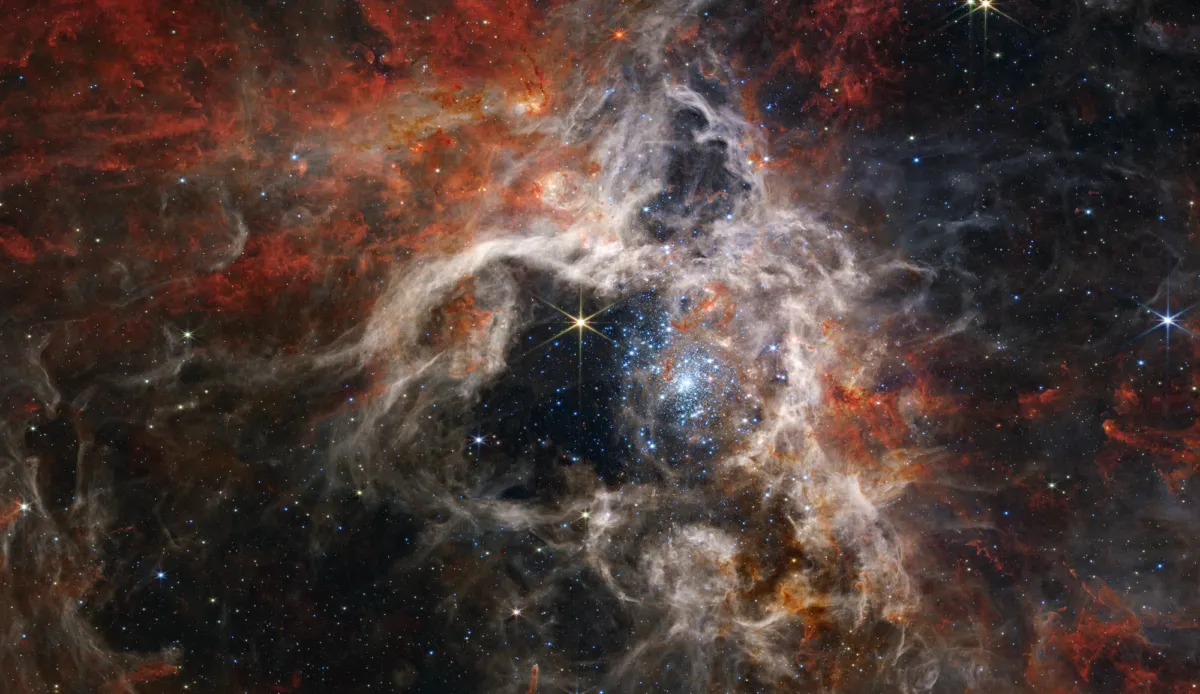The James Webb Space Telescope has revealed the Tarantula Nebula in new light, in the latest image to be released by the science team.
The Tarantula Nebula is located about 161,000 lightyears away in the Large Magellanic Cloud, which is a satellite galaxy of our own Milky Way galaxyand a part of our Local Group.
Discover James Webb Space Telescope's latest images.

Webb’s infrared vision enables it to peer through cosmic dust and gas to observe objects that could normally not be seen in optical light.
Here, the space telescope has revealed thousands of stars in this stellar nursery - also known as 30 Doradus - that have never been seen before by astronomers.
Indeed, previous images of the Tarantula Nebula had shown off the wispy tendrils that give the region its name, but this new image from the James Webb Telescope goes beyond what is visible to the human eye.
The image also reveals many distant background galaxies, giving astronomers a view of the deep sky as well as the gas and dust structures of this star-forming region.
This has all been made possible by one of Webb's instruments known as the Near-Infrared Camera (NIRCam), which gives a clear view of the central cavity in the nebula, hollowed out by powerful radiation from massive, young, energetic stars.

The Tarantula Nebula appears completely different when viewed through the James Webb Space Telescope’s Mid-infrared Instrument (MIRI), as seen in the image above.
In this psychedelic view, captured in longer infrared wavelengths, stars no longer appear so bright, and instead the cooler surrounding cosmic dust and gas glows.
The points of light seen within the clouds are protostars embedded in the nebula.
These two images captured using different instruments and different wavelengths of light reveal the varying views of the Universe that the Webb Telescope provides astronomers, and are a vital piece in uncovering the secrets of star formation.
Read the full release via the Webb Telescope website.

